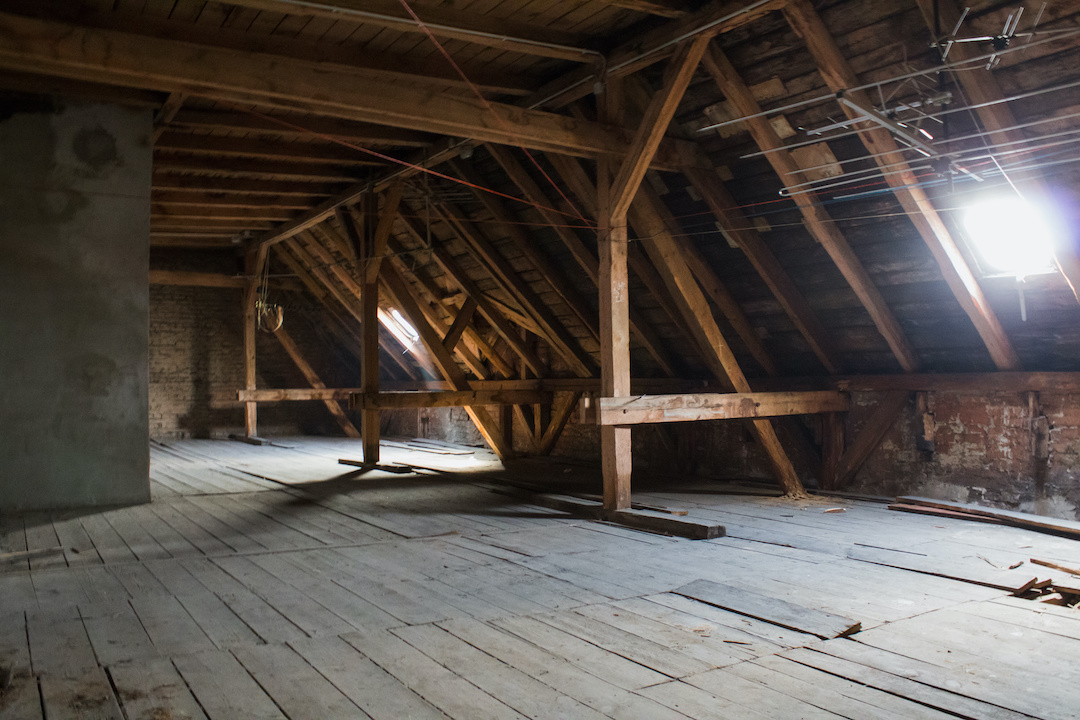Let’s be honest — mold is one of the most inconvenient things a homeowner can experience. Not only can it be damaging to our house, it can also be damaging to our overall health and if left untreated can lead to various health problems. While Mold Remediation Technology and treatment products have come a long way in recent years, finding what caused the mold and correcting these issues can be difficult. When treating mold, the threshold per the IICRC S520 is once we’re greater than 10SFof visible contamination, its recommended to have the mold professionally remediated. Luckily, we are here to take a deep dive and figure out the most common causes of attic mold and how you should deal with it.
What Causes Attic Mold?
Generally speaking, mold is tied to moisture problems, meaning that you can rarely have one without the other. And when it comes to your attic, there are a lot of ways that it can end up with moisture and high humidity.
Bad Ventilation or Blocked Vents
Usually, most attics have a passive ventilation system in which air comes through the bottom vents, warms up, and escapes through the top ridge vents. The result is a nice, breezy airflow that keeps the attic well-ventilated and dry.
However, sometimes, the ventilation system has a hard time keeping up with the outside temperature. Not only that, but the vents tend to get blocked with insulation or debris. When that happens, the warm and humid air from your attic will stagnate and condense, causing mold and mildew.
Roof Issues
Roof damage such as missing shingles or punctured flashing will most likely cause leaks during rain. The water will then infiltrate your roof and accumulate inside your attic and through the walls. Over time, the water becomes a breeding ground for mold and mildew, allowing them to spread all throughout the house.
Improper Exhausting
The purpose of exhaust vents is to remove moisture from your home. As a result, you need to make sure that they don’t terminate inside your attic. Additionally, exhaust vents tend to break, allowing moisture to accumulate inside your home, including your attic. Without proper maintenance, the exhaust vents will become a primary source of condensation, which will ultimately cause mold inside your home.
How to Remove Mold
Once you are sure that you are dealing with mold, you need to remove it as soon as possible. You can either try to handle it yourself or contact a professional mold removal company (depending on if the visible contamination is or is less than greater than 10SF).
Do It Yourself
Depending on the severity of the infestation, if less than 10SF, you may be able to remove the mold yourself using chemical solutions. Also, remember that you will need to fix the cause of the infestation after you get rid of the mold. So make sure to clean and inspect your attic once you have dealt with the mold.
Professional Help
If you can’t handle the mold yourself or the damage is too extensive and greater than visible contamination 10SF, you need to contact a local mold removal company. They will be able to find the source, remove the mold and then help you prevent further infestations. Furthermore, mold contractors can also inspect the rest of your home and look for problems that could cause mold later down the road.
The Bottom Line
Overall, mold is a very common problem that many households deal with constantly. However, it’s important to acknowledge that mold is a health risk that needs to be removed as soon as possible. So, if you are having mold problems, you should contact a local contractor such as Mold Solutions. Our professional team is more than ready to help restore your home to its mold-free state. Click here for your free Attic Mold Removal Estimate Request.








